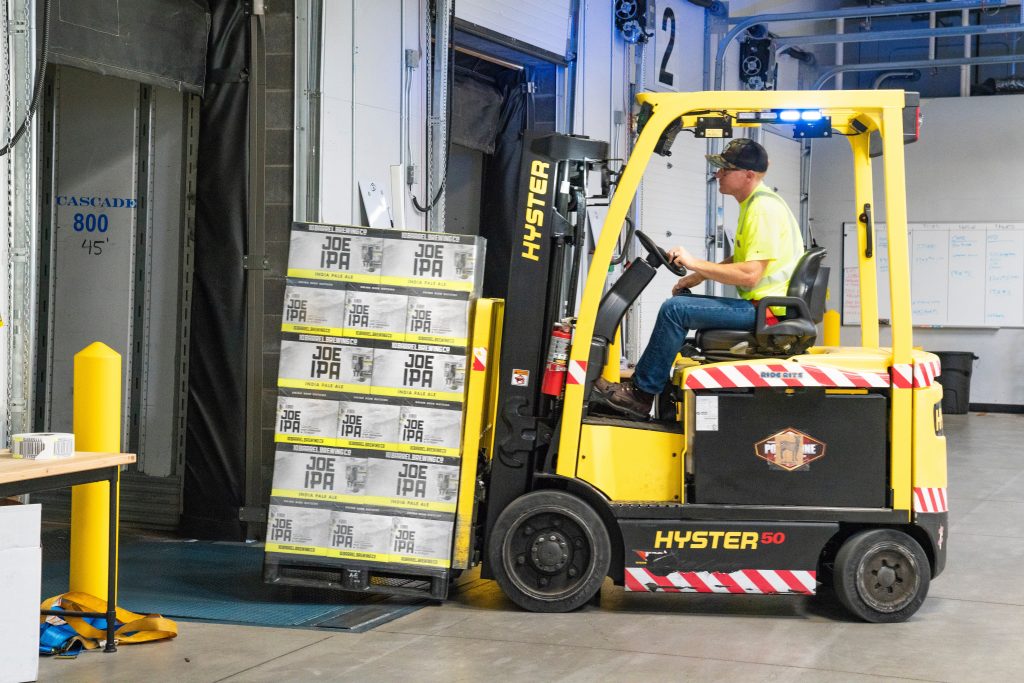
Is your organization is looking to shift away from paper-based occupational health and safety (OHS) management? If so, you may have heard about OHS software packages and wanted to find out more about them. In this guide, we’ll tell you everything you need to know about OHS software packages, including what they are, how they work and more.
In this guide, we’ll be discussing things like
1. What is an OHS software package?
2. What can OHS software do?
3. Features and functionality
4. Advantages and benefits of OHS software packages
Sound fair? Then let’s get right to it!
1. What is an OHS software package?
An OHS software package is a suite of software that helps an organization manage and run its OHS system. This software helps ensure that the organization is in full compliance with all relevant OHS rules and regulations. In short, the software package should be able to cover every aspect of a company’s OHS process.
This includes:
- Planning for accident and illness prevention
- Assigning responsibilities for health and safety procedures within the company
- Planning and implementing practices, resources and procedures for the OHS policy.
- Maintaining and reviewing the OHS policy.
An OHS software package helps you to understand the cause of incidents and gives you the tools to reduce the chances of future incidents occurring. It can also give you a clear overview of associated costs and this can help you manage risks with confidence.
2. What can an OHS software package do?
An OHS software package is designed to be used in various ways by all members of an organization, from senior management down to junior employees. The most common type of OHS software is cloud-based, meaning that all documents and files are stored remotely on servers. With cloud-based software, all internet-enabled devices (desktop, mobile, iOS, or Android) can access an organization’s OHS documents. Rapid deployment in the cloud means that an organization can have their OHS management software up and running instantly. An easily configurable dashboard allows employees to interact with all OHS documents that are relevant to them.
Company employees and contractors can:
- Report accidents and injuries.
- Report hazards and risks.
- Receive reminders to complete certain tasks such as routine safety checks.
- Review completed risks, hazards and incident forms.
Managers can use OHS software to:
- Receive notifications of all reported accidents, incidents and injuries.
- View all hazards, risks, incidents and injury forms.
- Generate reports from the filed incident and risk reports.
- Communicate with staff and delegate duties and responsibilities.
- Review training received by staff.
Key stakeholders and senior management can:
- Ensure regulatory compliance and improve consistency across multiple premises.
- Enhance and facilitate communication.
- Streamline and standardize OHS practices.
- Determine cost-effective solutions that make the workplace safer.
3. Features and functionality
If you’re curious to know more about leading OHS software packages, here’s an overview of the most commonly available features and functionality found in many packages on the market today.
User-friendly interface
OHS software features a clear, simple and intuitive user-interface (UI). Employees will interact with the UI every time they access the OHS software, whether via a web browser or through an app on a mobile device. The UI helps them with the following tasks:
- Create and file incident, accident and injury reports
- Conduct and file a risk assessment.
- View stored documents (if access is provided).
- Managers can view employee OHS training records.
OHS software can be managed by senior staff so that each member of the organization is given certain access permissions. A junior-level employee may be able to create and save an incident report, but likely wouldn’t be given permission to view other stored documents. Managers may be able to view documents and the training records, but likely only of staff within their department and not across the entire organization.
Easily-configurable dashboard
When employees access the OHS software’s UI, they are greeted with a dashboard. This shows them the available options, such as creating an incident report or building a chart or report from available data. This dashboard is easily configurable and can be customized so that each member of staff is presented with only the actions and options for which they have permission. A company’s senior management or IT department is able to create unlimited configurations for each member of staff. However, even non-technical users are able to configure the appearance of their own dashboard to suit their preferences.
International integration
An OHS software package can be adjusted to suit multiple languages, time zones, currencies, and formats. This helps employees interact with and use the package, no matter where in the world they are located. It is also possible to integrate the software with other applications such as web services and API, for added convenience.
Software functionality
An OHS software package offers a wide range of software functionality. This includes the following areas:
- Hazards, risk, incidents and injury reporting
- Risk assessments
- Action management
- ‘Open’ workflows
- Automated reminders
- Dashboard reports
We’ll look at each of these areas separately.
Hazards, risk, incidents and injury reporting
The primary function of an OHS software package is to let employees and/or contractors report hazards, risks, incidents and injuries as they occur. For example, if an employee sees a colleague slip and fall, they would use the OHS software to write and submit an incident and injury report. They would access their dashboard through a desktop or mobile device and then create and submit their observation of what happened.
With a cloud-based OHS software package, this completed incident and injury report is uploaded to the cloud and will automatically be made available to all members of the organization who have permission to view such documents. To encourage compliance, some OHS software packages include mobile apps. Apps make it easier to complete reporting duties and this encourages employees to submit forms in a timely manner. Organizations that use OHS software with mobile apps find that staff engagement levels improve, greatly supporting the company’s ability to meet its OHS goals.
Risk assessments
The second function of an OHS software package is to help the organization’s senior management conduct risk assessments and decide on a course of action. Cloud-based packages enable management to view all hazards, risk, incidents and injury reports as they are filed. Many packages will automatically notify management as soon as such a report is filed. The software then helps staff members process this data and create graphs or reports that can be used to create a risk assessment or develop a further course of action.
Action management
OHS software packages enable employees and/or contractors to report incidents, hazards and near misses with ease. This helps senior staff to collect and review this data and decide upon the best course of action. For example, if an organization identifies that a number of accidents are occurring in a certain section of their warehouse, they can direct staff to conduct a risk assessment and carry out regular safety checks. This helps managers to classify and manage incidents across their entire business and apply cost-efficient strategies that help manage and minimize workplace risk.
‘Open’ workflows
A key feature of cloud-based OHS software packages is that they help staff work together in ‘open’ workflows. Unlike paper-based OHS management systems, cloud-based OHS software lets multiple employees contribute to a document or work on a task in real-time. Access to stored documents is shared with relevant people and this helps build collaboration among staff. Open workflows help an organization save time, ultimately improving its bottom line.
Automated reminders
OHS software can be set up to provide automated reminders to all staff. For example, it can send reminders to workers to complete safety checks. It can also send reminders to management to review collated data or to complete an action such as creating a safety report. Automated reminders help ensure that a company is in compliance with all OHS regulations. OHS software can automatically remind the staff to complete these duties and then alert management as soon as they are completed.
Dashboard reports
One of the most useful features of OHS software packages is that they let employees create dashboard reports. This feature uses data from filed incident and accident reports and can help senior management understand the cause of incidents, their frequency, and their associated costs. Dashboard reports can give staff the necessary data needed to reduce the chance of repeat incidents occurring. This helps an organization create a safe workspace for its staff and manage risks with a greater degree of confidence.
4. Advantages and benefits of OHS software packages
Moving to an OHS software package offers many advantages and benefits compared with a paper-based approach. Here are the main benefits of adopting an OHS software package.
Data accessibility and sharing
The primary benefit of digitizing your OHS documents and moving to a cloud-based OHS software package is that you create what’s called a ‘connected processes’ model. This means that the suite of software can take care of your organization’s health and safety needs by having each piece of software ‘talk’ to the other pieces.
For example, if one of your employees files a ‘Risk report’ and another employee files an ‘Incident report’, an OHS software package can share this information so that it is available to everyone with permission across your whole organization. This reduces admin time and frees up your staff to complete their duties.
Lower costs
OHS software packages can be more cost-effective than having separate systems. Managing things like your risk assessment and training through the same suite of software can keep your costs down.
Performance
An OHS software package typically offers faster performance than relying on paper-based OHS management systems or a number of separate systems. Employees and contractors can quickly pull up all data relevant to them, such as training records, incident reports, and observations. Managers can quickly assign duties to specific staff and receive updates about their progress.
Convenience
Cloud-based OHS software packages that incorporate a mobile app make it far simpler and convenient for staff to complete incident reports in the event of an accident or incident. Easy-to-use app-based reporting makes proactive hazard reporting more likely and this can lead to a reduction in accidents and incidents.
Improved communication
An OHS software package helps to improve communication between staff across an entire organization, making it ideal for medium and large businesses with multiple locations. Employees are kept up-to-date with their tasks and can communicate and share information with their colleagues and managers. This also eliminates duplication of documents, replacing multiple paper files with a single file stored in the cloud that can pull in data from multiple employees.
Enhanced growth
OHS software packages are far simpler and quicker to maintain than paper-based OHS management systems. You will spend less time chasing information from employees and reduce the risk that data or tasks going missing or being left incomplete. OHS software packages will free up your staff’s time and leave them with more time to focus on their duties and responsibilities.
Closing thoughts
Now that you’ve seen the benefits and advantages of an OHS software package, it is important to take the time to discover which package meets the needs of your organization. Leading OHS software companies have years of experience in building around successful organizations and helping to reduce workplace incidents. The world’s leading employers rely on this software to protect their employees, contractors, and visitors every day.
Whatever stage of the process you are at, whether you are looking to shift from a paper-based system to an electronic one, or are looking for a different software solution, the right OHS software package is just around the corner.
Contact us today to find out how Beakon software can help your organisation achieve its goals for a safe and secure workplace.
Related posts:



